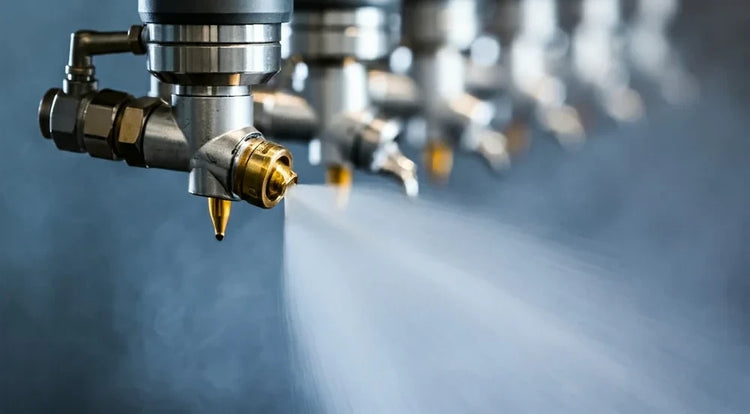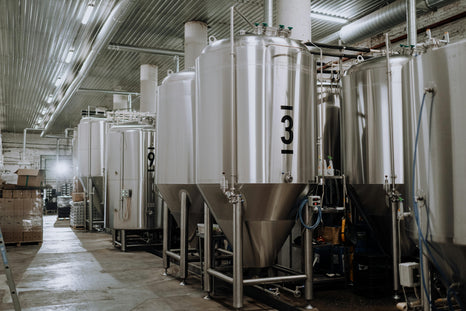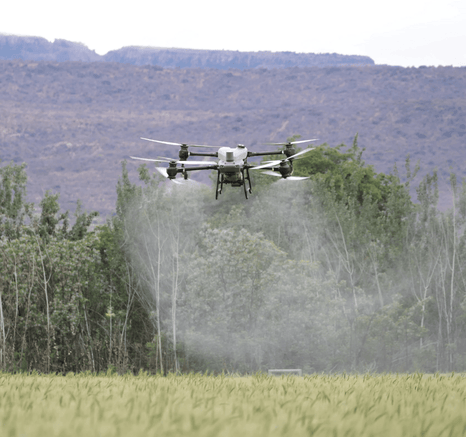Ever wondered how industries manage to spray liquids with such precision? Enter the world of pneumatic atomizing nozzles. These gadgets are game-changers in the spray application scene. From food processing to pharmaceuticals, they're everywhere, helping to control droplet size and improve efficiency. Let's dive into the benefits of these nozzles and see why they're a top choice for many industries.
Key Takeaways
- Pneumatic atomizing nozzles offer precise droplet control, enhancing spray accuracy.
- They are energy efficient, making them cost-effective for long-term use.
- Versatility is a key feature, allowing use across various industries from food to chemicals.
- Proper maintenance ensures longevity and optimal performance of the nozzles.
- Compared to other types, pneumatic nozzles often provide better performance in specific applications.
Understanding Pneumatic Atomizing Nozzles
Principles of Operation
Pneumatic atomizing nozzles work by using compressed air to break up a liquid into fine droplets. This process is known as atomization. The compressed air interacts with the liquid, causing it to shear into tiny particles. This method is effective for creating a uniform spray pattern. The principle relies on the kinetic energy of the air to generate a mist of liquid droplets, which can be controlled for size and distribution.
Types and Variations
There are primarily two types of pneumatic atomizing nozzles: internal and external mixing nozzles.
- Internal Mixing Nozzles: These mix air and liquid inside the nozzle before expulsion, providing a finer control over droplet size.
- External Mixing Nozzles: Here, the air and liquid mix outside the nozzle, which can be beneficial for handling viscous fluids or when using abrasive materials.
- Siphon Nozzles: These do not require a pressurized liquid source, relying instead on the vacuum created by the air flow to draw liquid into the nozzle.
Key Components
The main components of a pneumatic atomizing nozzle include:
- Air Cap: Directs the air flow and influences the spray pattern.
- Fluid Tip: The point where the liquid exits and interacts with the air.
- Body: Houses the internal components and provides structural integrity.
- Needle Valve: Controls the flow of liquid into the nozzle, allowing for precise adjustments.
Understanding these components and how they interact is crucial for optimizing the performance of pneumatic atomizing nozzles. Mastery over these elements allows users to tailor the spray characteristics to their specific needs, ensuring efficient and effective application in various industries.

Advantages of Pneumatic Atomizing Nozzles in Spray Applications
Enhanced Droplet Control
Pneumatic atomizing nozzles are known for their precise droplet size control, which is crucial for many industrial processes. By using a gas stream to break up the liquid, these nozzles can produce a consistent and narrow range of droplet sizes. This level of control is particularly beneficial in applications such as coating, where uniformity is key. The ability to adjust droplet size by modifying air and liquid pressure allows for flexibility in different settings, making them suitable for various materials and viscosities.
Energy Efficiency
One of the standout features of pneumatic atomizing nozzles is their energy efficiency. Unlike hydraulic nozzles that rely solely on liquid pressure, pneumatic nozzles use compressed air to assist in atomization, which often requires less energy. This can lead to significant cost savings, especially in large-scale operations where energy consumption is a major concern.
Versatility Across Industries
Pneumatic atomizing nozzles are incredibly versatile and find applications across numerous industries. Whether it's in the food and beverage sector, pharmaceuticals, or chemical processing, these nozzles can handle a wide range of liquids, from thin solutions to viscous slurries. Their adaptability makes them an essential tool in any industry requiring precise spray applications.
Pneumatic atomizing nozzles offer a unique blend of precision, efficiency, and versatility, making them an invaluable component in modern spray technology. Their ability to produce uniform droplets with minimal energy usage is unmatched, providing industries with a reliable solution for their spraying needs.
Technical Considerations for Implementing Pneumatic Atomizing Nozzles
Pressure and Flow Rate Management
When setting up pneumatic atomizing nozzles, managing the pressure and flow rate is absolutely crucial. These factors directly affect the droplet size and spray pattern, which are key to achieving desired results in spray applications. Consistent pressure ensures uniform droplet size, while the flow rate must be adjusted based on the viscosity of the liquid being atomized.
- Pressure Settings: Typically, pneumatic nozzles operate within a range of 60 to 100 psi. Adjustments within this range can help fine-tune the droplet size.
- Flow Rate: This depends on the liquid's properties, requiring careful calibration to avoid clogging or inefficient atomization.
- Monitoring: Regular checks on the pressure and flow rate can prevent inconsistencies in spray quality.
Material Compatibility
Selecting the right materials for both the nozzle and the liquid is vital to ensure longevity and efficiency. The materials must withstand the operational pressures and the chemical nature of the liquids.
- Nozzle Material: Stainless steel is commonly used due to its resistance to corrosion and wear.
- Liquid Compatibility: It’s important to ensure that the liquid does not react adversely with the nozzle material, which could lead to degradation.
- Testing: Conduct compatibility tests before full-scale implementation.
Maintenance and Longevity
Regular maintenance is key to extending the lifespan of pneumatic atomizing nozzles. This involves routine cleaning and inspection to prevent build-up and wear.
- Cleaning Procedures: Implement a regular cleaning schedule to prevent clogging, especially with viscous or particle-laden liquids.
- Inspection: Frequent inspections can help identify early signs of wear or damage.
- Replacement Parts: Keep an inventory of essential replacement parts to minimize downtime during maintenance.
Proper management of these technical aspects not only enhances the performance of pneumatic atomizing nozzles but also ensures a longer operational life, making them a cost-effective choice for various industries.
Comparative Analysis: Pneumatic vs. Other Atomizing Nozzles
Performance Metrics
When comparing pneumatic atomizing nozzles with other types, such as pressure and rotary atomizers, performance metrics become a crucial factor. Pneumatic nozzles are known for producing very fine droplets, which is ideal for applications needing precise droplet distribution. Pressure nozzles, on the other hand, rely on the liquid's momentum to break up droplets, often resulting in larger droplet sizes. Rotary atomizers use centrifugal force to produce droplets, which can vary based on the wheel's speed and design.
Here's a quick comparison table to illustrate:
|
Nozzle Type |
Droplet Size Control |
Energy Consumption |
Ideal Use Case |
|
Pneumatic |
Excellent |
High |
Fine mist applications |
|
Pressure |
Moderate |
Low |
General spray applications |
|
Rotary |
Variable |
Moderate |
Large scale industrial processes |
Cost Implications
Cost is always a consideration when selecting atomizing nozzles. Pneumatic nozzles can be more expensive due to their need for compressed air, which adds to operational costs. Pressure nozzles are generally more economical, both in terms of initial investment and operational costs, as they do not require additional energy sources. Rotary atomizers fall somewhere in between, with costs varying based on the complexity of the system.
Application Suitability
Each type of nozzle has its niche. Pneumatic nozzles are perfect for applications where precision and control over droplet size are paramount, such as in pharmaceutical manufacturing or fine coatings. Pressure nozzles are versatile and can be used in a wide range of industries, from agriculture to cooling systems. Rotary atomizers are typically used in large-scale industrial applications, where high throughput is necessary.
Choosing the right atomizing nozzle depends heavily on the specific requirements of the application, including the desired droplet size, energy consumption, and cost constraints. Understanding these factors can lead to more efficient and effective spray operations.
Innovations and Future Trends in Pneumatic Atomizing Nozzle Technology
Advancements in Design
Pneumatic atomizing nozzles have seen significant design improvements, aiming for precision and efficiency. Modern designs focus on reducing air consumption while maintaining optimal droplet size and distribution. Innovations include adjustable spray angles and multi-fluid capabilities, allowing for more tailored applications. These advancements not only enhance performance but also contribute to cost efficiency, making them more accessible across various industries.
Sustainability and Environmental Impact
As industries strive for sustainability, pneumatic atomizing nozzles are being developed with eco-friendly materials and processes. Efforts are being made to minimize waste and reduce energy consumption. Future trends indicate a shift towards using biodegradable materials and recyclable components, aligning with global environmental goals. These innovations not only address environmental concerns but also enhance the overall efficiency and effectiveness of spray applications.
The future of pneumatic atomizing nozzles is bright, with innovations focusing on efficiency, smart integration, and sustainability. These advancements promise to meet the growing demands of modern industries while addressing environmental challenges.
Case Studies: Successful Applications of Pneumatic Atomizing Nozzles
Food and Beverage Industry
In the food and beverage industry, pneumatic atomizing nozzles play a crucial role in ensuring precise and efficient application of liquids. These nozzles are particularly useful in processes like coating, flavoring, and sanitizing. For instance, in chocolate manufacturing, they help in evenly applying cocoa butter, ensuring a smooth and uniform finish. Similarly, in beverage production, these nozzles are employed to sanitize bottles and cans, significantly reducing the risk of contamination.
Pharmaceutical Manufacturing
Pneumatic atomizing nozzles are indispensable in pharmaceutical manufacturing, especially in processes requiring fine particle distribution. They are used in the production of tablets and capsules, where precise coating is necessary to control the release of active ingredients. Additionally, these nozzles are utilized in the formulation of nasal sprays and inhalers, providing consistent droplet sizes that are critical for effective drug delivery.
Chemical Processing
In chemical processing, pneumatic atomizing nozzles offer versatility and control, essential for handling various substances. They are used in processes such as spray drying, where they help in converting liquid solutions into dry powders efficiently. These nozzles also facilitate the even distribution of chemicals in applications like paint spraying and adhesive application, ensuring quality and consistency in the final product.
Pneumatic atomizing nozzles have transformed industries by enhancing the precision and efficiency of liquid applications. Their ability to produce fine, controlled sprays makes them a preferred choice in sectors demanding high standards of quality and hygiene.

Conclusion
Wrapping up, pneumatic atomizing nozzles stand out as a versatile and efficient choice for spray applications. They offer a unique ability to produce fine droplets with a consistent size, making them ideal for a variety of industrial uses. By utilizing compressed air, these nozzles ensure precise control over spray patterns, which can significantly enhance application efficiency and reduce material waste. While they may require careful setup and maintenance, the benefits they provide in terms of performance and adaptability make them a valuable tool in any spray application toolkit. As industries continue to seek ways to optimize processes, the role of pneumatic atomizing nozzles is likely to grow, offering a reliable solution for achieving high-quality results.












